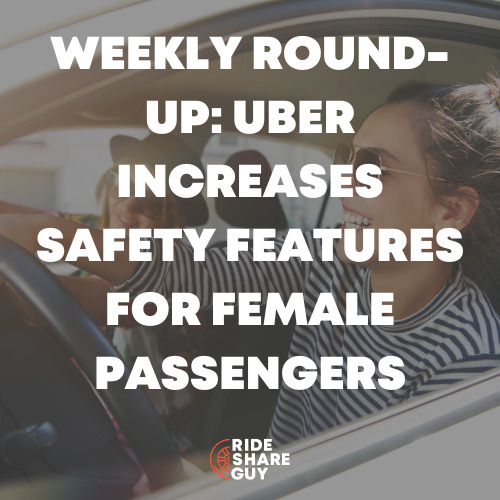A new Prop 22-like bill is coming to Massachusetts, but what’s the ultimate goal with this piecemeal strategy by gig companies? Will it work, or do we need federal legislation to decide the independent contractor vs employee debate? All this and more with senior RSG contributor Paula Gibbins in this week’s roundup.
Massachusetts AG greenlights Uber, Lyft-backed gig worker ballot initiative (Yahoo Finance)
Summary: Massachusetts Attorney General Maura Healey gave a coalition of app-based service providers like Uber and Lyft the go-ahead to start collecting signatures needed to put a proposed ballot measure before voters that would define drivers as independent contractors rather than employees.
Backers of the initiative, which is essentially a MA version of Proposition 22, would need to gather tens of thousands of signatures for the measure to make it to the November 2022 ballot. Despite the fact that last year Healey filed a lawsuit that challenged Uber and Lyft’s classifications of drivers as contractors who are therefore not entitled to benefits like sick leave, overtime or minimum wage, on Wednesday, the AG certified the current measure met constitutional requirements.
The news comes nearly two weeks after a superior court judged ruled California’s Prop 22, which was passed in 2020, unconstitutional. The union-backed Coalition to Protect Workers’ Rights urged Healey to reject the measure under the same grounds, and told Reuters that it is considering suing to challenge the measure….
My Take: Here we go again! With Prop 22 under scrutiny in the courts of California, you’d think Uber wouldn’t pursue anything further until the kinks are ironed out, but here they are in Massachusetts pushing for something similar.
While it still needs enough signatures, I imagine this ballot initiative would go the same way that Prop 22 did. It will rely on the general public not knowing much about it aside from the fact that Uber backs it and they will pay for advertising, promotions and whatnot to make it sound like they have only the drivers’ best interests in mind.
It also seems counterintuitive to take this one state at a time. What’s the end goal? All of the U.S., but literally going state by state to get a new model to be accepted? That seems a bit wasteful. What do you think?
Here’s the robotaxi that will be available on the Lyft app in 2023 (The Verge)
Summary: Motional, the autonomous vehicle company that is a joint venture between Hyundai and Aptiv, revealed more details about its forthcoming robotaxi as well as some of the first images of the vehicle. The company is also working with Lyft and says that by 2023, customers in certain cities will be able to hail rides in this vehicle using the Lyft app.
Motional first announced earlier this year that it would be using the Hyundai Ioniq 5, an all-electric crossover, as its inaugural vehicle. The company hasn’t said how many vehicles it would acquire, nor where it will eventually deploy them for its robotaxi service. It’s currently operating a fleet of BMW 5 series vehicles in Las Vegas in collaboration with Lyft.
The Motional robotaxi will be fitted with “more than 30 sensors,” such as cameras, radar, and lidar, prominently displayed around the exterior to help identify it as a vehicle that drives itself. The sensors provide the vehicle with a 360-degree field of vision, including high-resolution images and the ability to detect objects from a long distance….
My Take: These companies that keep predicting autonomous vehicles keep shortening their time frame, but is it even possible to have fully operational, road-ready, customer-ready fully driverless vehicles in 2 years?
I don’t see it happening. It’s still going to be a while before the general public will agree to get into vehicles outside of a relatively safe route that doesn’t have a driver or at least a safety driver in place.
It’s just not going to happen that fast. And there are so many factors to take into consideration—construction/road closures, incorrect GPS routes, technology glitches, etc. It’s going to be a lot longer than 2 years before this is truly a thing, no matter what they try to say.
DoorDash workers protest outside CEO Tony Xu’s home demand better pay, tip transparency and PPE (Tech Crunch)
Summary: California DoorDash workers protested outside of the home of DoorDash CEO Tony Xu on Thursday, prompted by a recent California superior court judge ruling calling 2020’s Proposition 22 unconstitutional. Prop 22, which was passed last November in California, would allow app-based companies like DoorDash, Uber and Lyft to continue classifying workers as independent contractors rather than employees.
A group of about 50 DoorDash workers who are affiliated with advocacy groups We Drive Progress and Gig Workers Rising traveled caravan style to the front of Xu’s house in the Pacific Heights neighborhood of San Francisco. They demanded that DoorDash provide transparency for tips and 120% of minimum wage or around $17 per hour, stop unfair deactivations and provide free personal protective equipment, as well as adequate pay for car and equipment sanitizing.
“Dasher concerns and feedback are always important to us, and we will continue to hear their voices and engage our community directly,” a DoorDash spokesperson told TechCrunch. “However, we know that today’s participants do not speak for the 91% of California dashers who want to remain independent contractors or the millions of California voters who overwhelmingly supported Proposition 22. The reality is, the passage of Prop 22 has addressed in law many of the concerns raised today through its historic benefits and protections: Workers earn 120% of their local minimum wage per active hour in addition to 100% of their tips, receive free PPE and enjoy access to healthcare funds.”…
My Take: It shouldn’t be the case that delivery drivers have to rely on tips to make a living wage or respectable earnings. They should be properly compensated for their time, mileage and work that they do.
While I think tipping is deserved and is a sign of respect for the work these people are doing, it shouldn’t be the difference between paying the bills or not.
I really wish everyone in “high power” positions would try to live off the wages of their lowest-paid workers.
A blueprint for a Flexible Benefits Fund for app-based workers in Canada (Uber Newsroom)
Summary: Research has long suggested that platform work could help people meet their financial needs in a crisis. COVID-19 put this research to the ultimate test, and this economic shock provided an opportunity to better understand the role that platform work can play in supporting financial resilience.
Today, Accenture released new research on the impact of platform work in labour markets. The research shows that platform work was a financial safety net during COVID-19 in Canada, and 75% of rideshare and delivery workers in Canada considered income from platform work as essential or important during the pandemic. And many workers who lost their jobs and weren’t eligible for government support turned to platform work to stay afloat. The data patterns show that delivery sign-ups followed the unemployment rate, giving people alternative opportunities to access work. There was a 72% correlation between delivery work sign-ups and the unemployment rate in Canada….
My Take: I’ll be curious to see if a flexible benefits fund works well for drivers in Canada. I am not sure I see it working the way drivers would expect. No offense to Uber, but there has to be a big upside for them to be even considering this. They have to be getting something out of it. Or, do they fear legal repercussions if they keep their current business model and they are just trying to stay ahead of the curve in that respect?
It sounds like a better deal overall than what California drivers got from Prop 22. At least it doesn’t sound as limiting as the health insurance stipends that drivers can get in California if they meet the limited criteria for earning it.
If you’re a driver in Canada and this goes through, please keep us informed on how it works for you and if you think it’s beneficial to you! Meanwhile, what do you think of this model? Will it work in Canada? Would it work in the U.S.?
-Paula @ RSG




